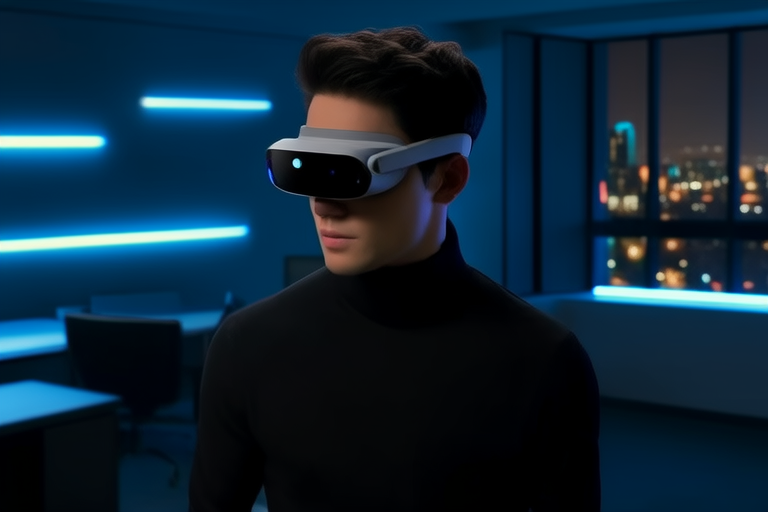“`html
The Immersive Experience: Unveiling New Frontiers with VR and AR Technology
Introduction
Virtual Reality (VR) and Augmented Reality (AR) are two transformative technologies that have been gaining significant traction in recent years. Both offer unique ways to interact with digital content, but they serve different purposes. VR creates entirely immersive digital environments that replace the physical world, while AR overlays digital information onto the real world, enhancing it rather than replacing it.
The journey of VR and AR began in the late 20th century with early prototypes and research projects. Significant milestones include the development of the first head-mounted display in the 1960s and the creation of the first commercial VR system in the 1990s. Over time, advancements in computing power, graphics processing, and sensor technology have propelled these technologies into mainstream applications. The concept of immersion is central to both VR and AR, as it involves creating an experience so engaging that users feel fully present within the virtual or augmented environment.
Key Points
Current Applications
VR and AR are revolutionizing numerous industries through innovative applications. In gaming, VR offers players a fully immersive experience, allowing them to step into the game world. For instance, titles like Half-Life: Alyx and Beat Saber have captivated audiences with their interactive and engaging gameplay.
In healthcare, VR is being used for pain management, therapy, and training medical professionals. For example, medical students can practice surgeries in a risk-free virtual environment, improving their skills before operating on real patients. AR is also making strides in healthcare, with apps like Picnic Health providing patients with personalized health information overlaid on their bodies.
Education benefits greatly from VR and AR, offering students interactive learning experiences. Virtual field trips, language learning, and science simulations are just a few examples. Retailers are leveraging AR to provide customers with virtual try-ons, enabling them to see how products look without physically handling them. In entertainment, VR and AR are enhancing storytelling, theme parks, and live events, offering more engaging and interactive experiences.
Technological Advancements
Recent breakthroughs in hardware and software have significantly improved the VR and AR experience. High-resolution displays, wider fields of view, and reduced latency are making virtual environments more realistic and comfortable to use. Haptic feedback systems, which simulate touch sensations, further enhance immersion by allowing users to feel objects within the virtual world.
Advances in sensors, such as eye-tracking and hand-tracking, enable more natural and intuitive interactions. Development tools and platforms, like Unity and Unreal Engine, are making it easier for developers to create compelling VR and AR applications. These advancements are driving down costs, making these technologies more accessible to consumers and businesses alike.
Challenges and Limitations
Despite their potential, VR and AR face several challenges. Motion sickness, a common issue in VR, can make prolonged use uncomfortable. Technical barriers, such as the need for powerful hardware and stable internet connections, limit accessibility. Cost remains a significant barrier, particularly for high-end devices and experiences.
Ethical considerations and privacy concerns are also important. As these technologies become more integrated into daily life, issues related to data security, user consent, and the potential for misuse arise. Ensuring that VR and AR are developed and deployed responsibly is crucial for their long-term success.
Future Prospects
The future of VR and AR looks promising, with ongoing innovations in mixed reality (MR), spatial computing, and AI. MR combines elements of both VR and AR, creating hybrid environments where digital and physical worlds coexist seamlessly. Spatial computing enables interaction with digital objects in three-dimensional space, enhancing productivity and creativity.
The integration of AI with VR and AR is expected to further enhance user experiences by personalizing content, predicting user needs, and improving interaction models. Emerging trends like cloud-based VR and AR, which leverage remote servers for processing power, promise to reduce the need for expensive local hardware.
Impact on Society
VR and AR have the potential to transform everyday life, work environments, and social interactions. In manufacturing, AR can assist workers with maintenance tasks and training, while VR can be used for remote collaboration and design reviews. Architecture firms can use VR to create immersive walkthroughs of building designs, allowing clients to experience spaces before construction begins.
Remote collaboration tools powered by VR and AR could revolutionize the way people work together, breaking down geographical barriers and fostering more effective communication. Social interactions may also evolve, with virtual meetups and social gatherings becoming more common. The broader implications for industries like retail, entertainment, and education are profound, offering new opportunities for engagement and learning.
Conclusion
This article has explored the advancements and potential applications of VR and AR technologies, highlighting their current uses, technological advancements, challenges, future prospects, and societal impact. VR and AR are not merely tools for entertainment; they are powerful enablers of innovation and transformation across multiple sectors.
As these technologies continue to evolve, we can expect even more exciting possibilities to emerge. From enhanced educational experiences to more efficient workplace collaboration, the future of VR and AR holds immense potential. Let us embrace these technologies with enthusiasm and foresight, recognizing their ability to shape a more connected and immersive world.
“`


